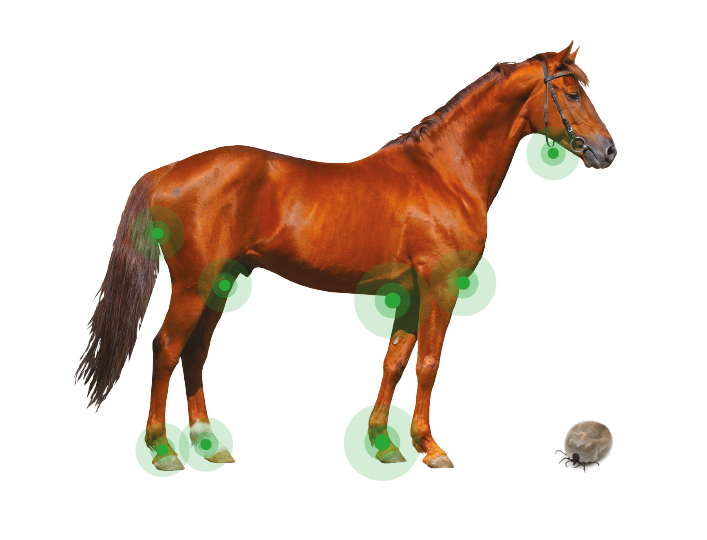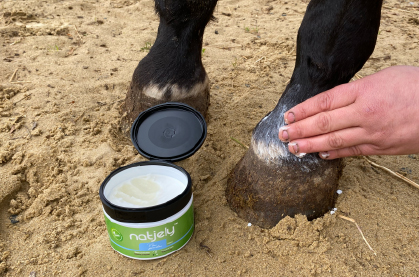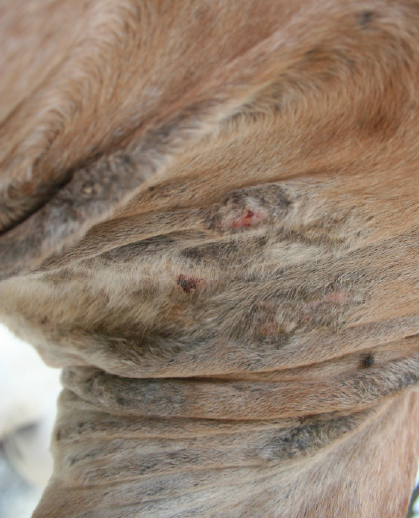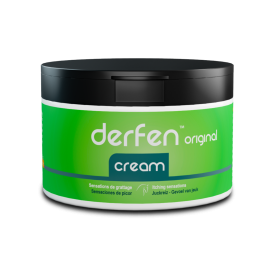Ticks on horses, prevention and care in the event of a bite
Did you know about tick activity?
Tick activity peaks when outside temperatures are between 5 and 25°C: spring and autumn are therefore particularly favorable seasons for tick attacks. Below and above these temperatures, their activity diminishes, until they become completely lethargic in the most extreme conditions (temperatures below or above 35°C, or even drought).
They target specific areas of the horse's body, corresponding to "climbing" attacks. These areas should be prioritized in preventive treatments


Ticks are everywhere, slipping or falling onto the animal whenever they can.
Although chemical agents can limit their attacks, they are still very harmful to the environment and the horse.
The most ecological solution is to apply NATJELY 2 or 3 times a week to the climbing areas (neck, pastern and top of hoof, and possibly the inside of the thighs). The infestation will be extremely limited and the skin moisturized at the same time.

In the event of a tick bite, scabby sores may appear, sometimes causing discomfort or scratching in the horse.
Apply SHAMPOO TEA TREE to limit any infection and soothe.
Then apply NATJELY to each bite and repeat a few days later.
If, on the other hand, the bite is very itchy, DERFEN CREAM ORIGINAL is ideal. Repeat 4 days later if necessary.
 ANIMADERM S.A.S
ANIMADERM S.A.S


